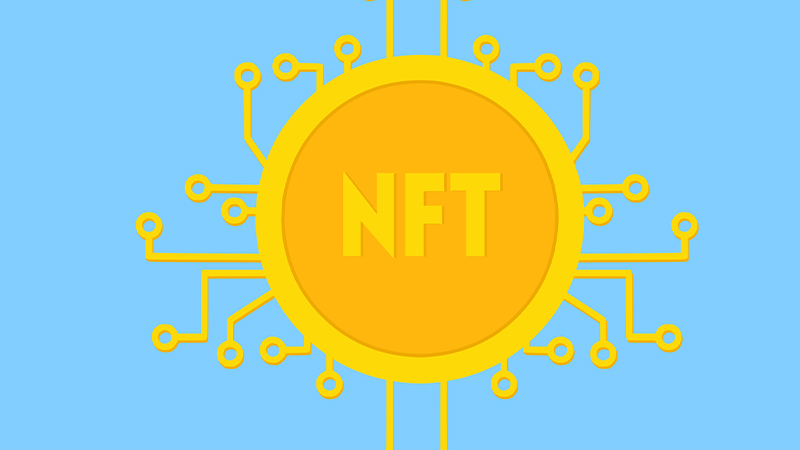By Jordan Jones
NFTs are… Actually, what are NFTs? I’ve asked every person around me what an NFT really is, and the answer always comes back blank. Well, after literal hours of reading and pounding my head against a wall, I believe I can better explain it now.
NFTs stand for non-fungible tokens. What does that mean? Basically, “non-fungible” means that they’re unique, and they can’t be replaced by anything else. For example, the United States dollar bill is fungible—trading a one dollar bill for another dollar bill leaves both people with the exact same thing.
If I were to trade, though, a cheap 2021 baseball card for a one-of-a-kind, all-star 1970 collectible baseball card, one person leaves with a very different card than the other. Thus, these collectible cards are said to be “non-fungible,” and that is the principle of NFTs.
For a fun glimpse as to how these things work in real life, we can look at the founder of Twitter, Jack Dorsey, selling his iconic first-ever tweet for $2.9 million: “just setting up my twttr.” Yes, despite that tweet being publicly visible for over 14 years on Twitter, he was able to buy an NFT on it and make a quick two million dollars.
Albeit ridiculous, that pretty much sums up this process in simple terms; any kind of digital media—whether that be art, music, content or other—is technically able to be bought (and sold) through an NFT. With that being said, a large part of the conversation is more geared around NFTs and their impact on the digital art world.
This is where some of the confusion arises, however. NFTs are supposed to be some material that can’t just be copied, yet any consumer can very easily download any file with art that includes an NFT. To put everything in simple terms, anybody can buy an NFT on a digital art piece, but they’ll merely have the one “original” edition while dozens of anonymous people may already have identical copies.
Is there really much of a difference, then? Short answer, no.
While buying NFTs are a great way to support your favorite artists, the value of digital media is far different than, say, real physical objects. Unless if you’re measuring down to every last pixel, identical copies are virtually just that: identical.
That’s not the only issue the new storm of consumers have with NFTs, however. These non-fungible tokens function a lot like cryptocurrencies in the sense that they take a lot of math, and they take a lot of energy.
Digiconomist’s website predicts that one singular Ethereum transaction—code name for the type of blockchain technology that cryptocurrencies and NFTs operate on—is equivalent to the amount of energy it would take to power an average U.S. household for over 6.3 days.
The size of that carbon footprint is tremendous. And, hopefully, scary to a lot of people! NFTs alone can net a total of 200 – 220kg of CO2 equivalent over the course of bidding, minting and transferring processes, and that doesn’t even include the energy needed to store and sell all that data.
Blockchain technology is said to be energy-intensive by design, and that should be really alarming news to environmental enthusiasts around the world. Unless we can find a more energy-efficient way to store and transfer NFTs across the virtual space, they pose a serious risk for global consumption efforts long-term.
It should be clear now, then, that NFTs are pretty controversial for a number of reasons. While it is nice to buy a downright adorable cat picture from your favorite artists online, the world of virtual trading still has lots of development to do.
Thank you (And, no, I will not be selling an NFT of this article~ <3)




